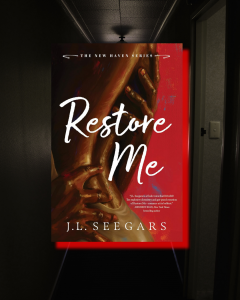Plotting with Purpose: 5 Storytelling Anchors Every Writer Needs
3 min read
“Great stories aren’t born—they’re built.”
Every writer, at some point, stares at the blinking cursor and wonders: Where do I even start? Whether you’re working on your first novel, a personal essay, a short story, or a script, the answer is simple but not easy:
You start with purpose.
Plotting a story isn’t about formulas—it’s about building a foundation. And while every creative journey is unique, there are certain storytelling anchors that help keep your narrative grounded and emotionally resonant.
Here are five core elements every writer should check for when plotting with intention.
1. A Character with Something to Lose
Your protagonist doesn’t need to be perfect—but they do need to want something.
- It could be love.
- It could be revenge.
- It could be survival.
Whatever it is, it must matter enough to move them through the story.
Ask yourself: What would break your character if they lost it? That’s the emotional core of your plot.
2. High Stakes (Emotional and Real)
Your plot only moves when there’s something at risk. Whether it’s a literal life-or-death situation or the quiet ache of a missed opportunity, readers need to feel the pressure.
Types of stakes:
- External: Time running out, enemies closing in, truth being exposed.
- Internal: Fear of failure, self-betrayal, unresolved grief.
Pro tip: Raise the stakes gradually throughout your story. Keep tightening the noose.
3. A Plot That Answers a Question
Every story should pose a question the reader subconsciously wants answered:
- Will she find her way back home?
- Can they forgive themselves?
- Will love survive the betrayal?
That central question gives your story focus. Every scene, subplot, and decision should feed into it.
The strongest plots revolve around choices that change the answer.
4. A Structure That Supports Your Voice
There’s no one-size-fits-all formula for structure. Three acts, four acts, seven-point arcs—they’re all tools, not rules. What matters is that your structure gives your story room to breathe and your voice room to shine.
Try asking:
- Does your structure mirror your character’s growth?
- Does the pacing feel honest to the emotional beats?
- Are you building to a payoff, or wandering?
Structure isn’t a prison—it’s a promise to your reader.
5. An Ending That Feels Earned
A great ending doesn’t just wrap things up—it reflects everything your character has fought for. Whether it’s tragic, triumphant, or ambiguous, it must feel earned.
Revisit your opening once you reach the end:
- Did the character change?
- Did they answer the central question?
- Did the stakes pay off?
Readers will forgive almost anything—except a hollow ending.
Final Word: Purpose Over Perfection
Plotting with purpose isn’t about sticking to rules—it’s about building with intention. When you know what your story wants to say, your characters speak louder, your scenes cut deeper, and your readers stay hooked.
So the next time you feel lost in your draft, come back to these anchors:
- What does my character want?
- What do they risk?
- What is this story really about?
- Am I building to something worth waiting for?
Plot with purpose. Write with power.







